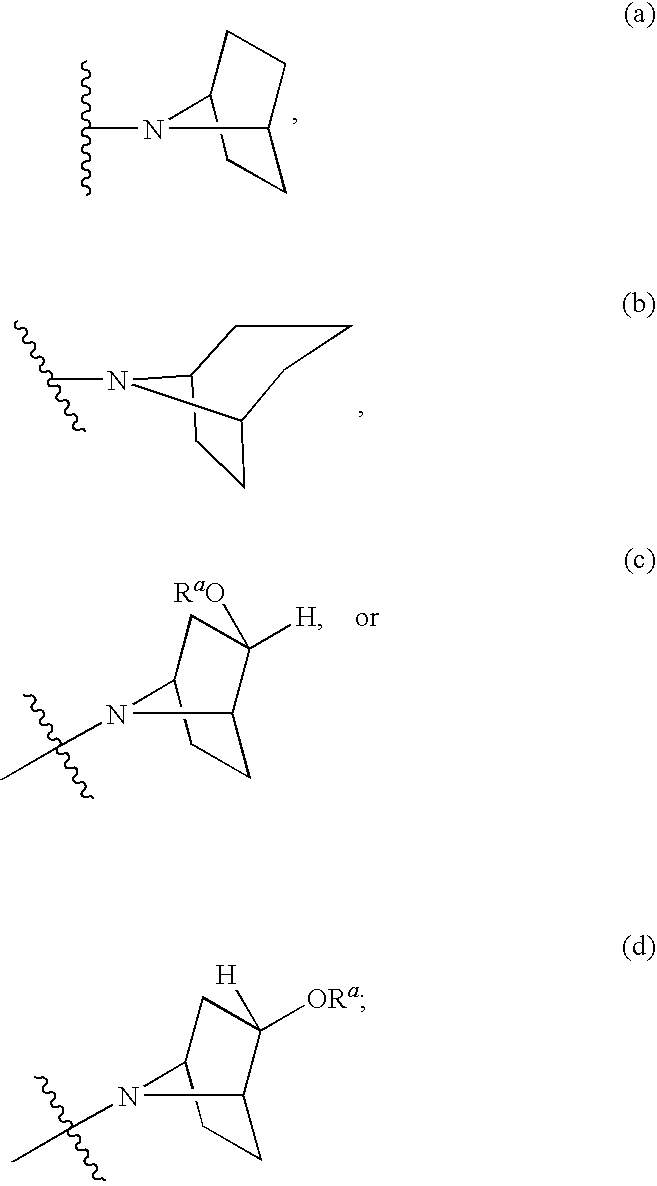Modulators of cystic fibrosis transmembrane conductance regulator
a technology of transmembrane conductance and cystic fibrosis, which is applied in the field of modulators of cystic fibrosis transmembrane conductance regulators, can solve the problems of imbalance in ion and fluid transport, debilitating and fatal effects of cf, and reducing anion transpor
- Summary
- Abstract
- Description
- Claims
- Application Information
AI Technical Summary
Benefits of technology
Problems solved by technology
Method used
Image
Examples
examples
Intermediate 1
Preparation of 4-oxo-5-(trifluoromethyl)-1,4-dihydroquinoline-3-carboxylic acid
[0381]
[0382]Preparation of diethyl 2((2-chloro-5-(trifluoromethyl)phenylamino) methylene) malonate (14). 2-Chloro-5-(trifluoromethyl)aniline 12 (200 g, 1.023 mol), diethyl 2-(ethoxymethylene)malonate 13 (276 g, 1.3 mol) and toluene (100 mL) were combined under a nitrogen atmosphere in a three-neck, 1-L round bottom flask equipped with Dean-Stark condenser. The solution was heated with stirring to 140° C. and the temperature was maintained for 4 h. The reaction mixture was cooled to 70° C. and hexane (600 mL) was slowly added. The resulting slurry was stirred and allowed to warm to room temperature. The solid was collected by filtration, washed with 10% ethyl acetate in hexane (2×400 mL) and then dried under vacuum to provide a white solid (350 g, 94% yield) as the desired condensation product diethyl 24(2-chloro-5-(trifluoromethyl)phenylamino) methylene) malonate 14. 1H NMR (400 MHz, DMSO-d6...
example compound 2
Preparation of N-(6-(7-azabicyclo[2.2.1]heptan-7-yl)-2-(trifluoromethyl)pyridin-3-yl)-4-oxo-5-(trifluoromethyl)-1,4-dihydroquinoline-3-carboxamide (Compound 2, Table 1)
[0394]
[0395]To a solution of 4-oxo-5-(trifluoromethyl)-1H-quinoline-3-carboxylic acid (100 mg, 0.3889 mmol) and 6-(7-azabicyclo[2.2.1]heptan-7-yl)-2-(trifluoromethyl)pyridin-3-amine (110.1 mg, 0.4278 mmol) in 2-methyltetrahydrofuran (1.0 mL) was added propyl phosphonic acid cyclic anhydride (50% solution in ethyl acetate, 495.0 μL, 0.7778 mmol) and pyridine (61.52 mg, 62.90 μL, 0.7778 mmol). The reaction was capped and heated at 60° C. for 16 h. The reaction was cooled to room temperature, diluted with ethyl acetate (10 mL) and quenched with saturated Na2CO3 solution (6 mL). After stirring for 20 min the organic layer was separated, dried over Na2SO4, filtered and concentrated. Purification by silica gel chromatography (0-20% ethyl acetate in dichloromethane) provided N-(6-(7-azabicyclo[2.2.1]heptan-7-yl)-2-(trifluoro...
example compound 1
Preparation of N-(6-(7-azabicyclo[2.2]heptan-7-yl)-4-methylpyridin-3-yl)-5-methyl-4-oxo-1,4-dihydroquinoline-3-carboxamide hydrochloride (Compound 1, Table 1)
[0397]
[0398]To a solution of 5-methyl-4-oxo-1H-quinoline-3-carboxylic acid (60 mg, 0.2953 mmol) and 6-(7-azabicyclo[2.2.1]heptan-7-yl)-4-methyl-pyridin-3-amine (60.03 mg, 0.2953 mmol) in 2-methyltetrahydrofuran (1 mL) was added propyl phosphonic acid cyclic anhydride (375.8 μL of 50% w / v, 0.5906 mmol) followed by pyridine (46.72 mg, 47.77 μL, 0.5906 mmol). The mixture was irradiated under microwave conditions for 1 h at 100° C. The crude reaction mixture was diluted with ethyl acetate (2 mL) and quenched with 10% NaHCO3 solution (3 mL). The resulting precipitate was filtered and washed with ethyl acetate (5 mL). The solid was resuspended in 20% aqueous Na2CO3 (5 mL) / methanol (2 mL) and stirred for 30 min. The solid was filtered, rinsed with water and air dried to provide N-(6-(7-azabicyclo[2.2.1]heptan-7-yl)-4-methylpyridin-3-y...
PUM
| Property | Measurement | Unit |
|---|---|---|
| temperature | aaaaa | aaaaa |
| temperature | aaaaa | aaaaa |
| temperature | aaaaa | aaaaa |
Abstract
Description
Claims
Application Information
 Login to View More
Login to View More - R&D
- Intellectual Property
- Life Sciences
- Materials
- Tech Scout
- Unparalleled Data Quality
- Higher Quality Content
- 60% Fewer Hallucinations
Browse by: Latest US Patents, China's latest patents, Technical Efficacy Thesaurus, Application Domain, Technology Topic, Popular Technical Reports.
© 2025 PatSnap. All rights reserved.Legal|Privacy policy|Modern Slavery Act Transparency Statement|Sitemap|About US| Contact US: help@patsnap.com



